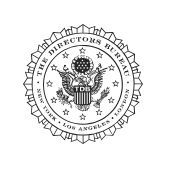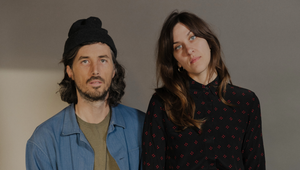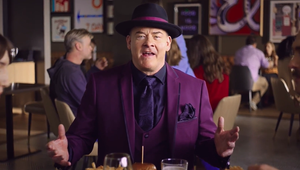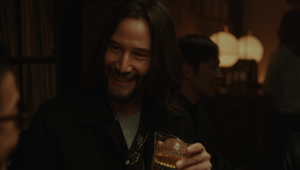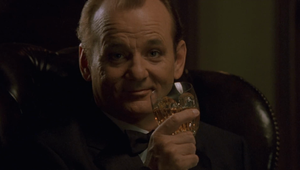
The Directors: Sing-Sing

Sing-Sing realises larger-than-life works across commercials, film, art, and design. Their studio brings together multidisciplinary skills to create intentional, meaningful work with a conceptual point of view. Visual storytellers, Sing-Sing infuses projects with subtle whimsy, elaborate choreography, and elevates impactful ideas with their multifaceted perspective. Collaborating since 2015, Sing-Sing has created worlds for global brands, including Google, BBC, Apple, Sony, Netflix, Nike, Target, and Lyft, as well as helmed music videos for John Legend, Fleet Foxes, and Opera Philadelphia. Beyond commercial direction, the Los Angeles-based studio is developing a stop-motion animation feature, a ballet film and ongoing interior projects for public spaces around Los Angeles.
Name: Sing-Sing
Location: Los Angeles. CA
Repped by/in: The Directors Bureau/US
Awards: LA Design Festival Award, UKMVA, Annie Award (Nominee), Young Guns Awards x 2
LBB> What elements of a script sets one apart from the other and what sort of scripts get you excited to shoot them?
Sing-Sing> We look for scripts that have something fresh and unexpected in them, whether in concept, tone, set design, or storytelling. We like concepts that are unpredictable, with wit and a light hearted sensibility that have room for us to expand upon the idea and take it to the next level. Sometimes spots have been tested and animatic’d for months before arriving on our desk, and though it’s fun to execute a tight script, we tend to enjoy building upon an idea with the creative team. It allows us to work our magic in.
LBB> How do you approach creating a treatment for a spot?
Sing-Sing> For commercial work treatments, we stay off the computer for the first phase, scribbling rough ideas as a stream of consciousness onto paper. This tactile step is important, as it lets our brains do the legwork before getting distracted by too much reference imagery. We look for inspiration in our small library of art, film, and design books and find that when we are cruising that way, our brain slows down and allows us to focus on the journey. When it feels like we have a solid concept for what we want to do, then (and only then) do we dig into online research, finding mood images in the usual places. Then our direction starts to take shape; we hone in a path, narrow down our ideas, and go full force towards whatever seems the most exciting.
Then we edit and rewrite. Then take a walk, then revise some more. Sometimes we go in one direction for a while, then realise we have a way better one, or something totally unexpected plops out of the idea universe. Then we lay it all out in a flowing design, edit some more, get feedback from our production company, then revise and rewrite again! Finally, we publish and share.
With music video treatments, the process is similar. It involves listening to the song over and over, and a much much simpler treatment, usually just a few pages with a couple reference images, and large bold text explaining the idea.
Whatever the project, we aim to have fun with a treatment. But we do like treatments that push us out of our comfort zone, and get us thinking from a new perspective.
LBB> If the script is for a brand that you're not familiar with/ don’t have a big affinity with or a market you're new to, how important is it for you to do research and understand that strategic and contextual side of the ad? If it’s important to you, how do you do it?
Sing-Sing> If we’re doing work for a brand that we aren’t familiar with, then we’ll ask the client and creative team a bunch of questions. How does it work? Who is this for? What are they looking for? We don’t need to be experts on the market, but it helps us to have a clear sense of what the brand is, the tone they are wanting to achieve, and who their audience is. This helps us narrow in on the right creative approach for the treatment and the project as a whole.
We created a series of ‘Oddly Satisfying’ videos for the South Korean arm of Simmons last year, and the project was a good example of how a brand can differ in a given market. In the US, we recognise Simmons as a mattress brand with fairly traditional mattress commercials. But in South Korea, Simmons is more of a fashion brand; they have a pop-up grocery store, an experimental art gallery, and really strange, cool commercials. It was important to the agency to NOT show any product. This was so refreshing because that’s usually a big sticking point for other projects. They kept pushing the creative with us to be as simple as possible. In the end, we made a series of ten looping videos for their experiential art gallery. But it was helpful to get to know that wing of Simmons and see what they’ve done before and be like, “oh, nice, you guys like to get weird!”
LBB> For you, what is the most important working relationship for a director to have with another person in making an ad? And why?
Sing-Sing> The most important relationship for us would be with the core creative team on the agency or brand side – creative directors / art directors / copywriters. If we’re aligned on taste and tone, then things go swimmingly. And, if they are confident and swift in their decisions then we can be as well.
LBB> What type of work are you most passionate about - is there a particular genre or subject matter or style you are most drawn to?
Sing-Sing> We find ourselves drawn to stories that are clever, well-paced, and imaginative, regardless of genre. We get excited about building worlds to tell stories in and we revel in the experience of building out those worlds. We’re inspired by films from all genres – from musicals, magical realism, and science fiction, to adventure stories and even a good rom-com.
LBB> Have you ever worked with a cost consultant and if so how have your experiences been?
Sing-Sing> Over the years, we’ve gotten used to working closely with our EPs and heads of production on budgets, making sure we’re accounting for everything and getting competitive rates from vendors, builders, crew and such. Because of the range of scales we work in, from table top to larger live action, small budget music videos to massive commercial projects, we’ve grown quite adept at figuring out how to bring a vision to life within budget.
LBB> What’s the craziest problem you’ve come across in the course of a production – and how did you solve it?
Sing-Sing> We just directed a series of Pinterest live action spots this summer, and the main challenge we had to figure out was how to shoot for stop motion animation and live action in one continuous shot. We weren’t going to stop and switch cameras, because it was supposed to be one continuous take where the room transforms around the actors as they cruise Pinterest.
Working with animation studio BUCK, lead stop motion animator Sarah De Gaudemar, stop motion DP Bil Thompson, and live action DP Patrick Jones, we developed a way to control our Alexa Mini camera for the animation plates using a web-enabled patch for the Dragonframe animation software. The Alexa had to stay locked in place for the four days it took to shoot and animate the entire :30 second spot.
In the end there was still a lot of stitching together, but luckily the integration and fluidity between live action and animation ended up being incredibly seamless. But it took a lot of testing, Zoom calls, tech research, and a talented crew to figure out how to pull it off.
LBB> How do you strike the balance between being open/collaborative with the agency and brand client while also protecting the idea?
Sing-Sing> There are a lot of points of view to consider working in the commercial space, and we try our best to keep the projects we are making in the correct tonal space. We’ve been lucky to have a solid group of collaborators who understand what we bring to a project.
We consider ourselves to be very collaborative directors. We prefer to lead with strong ideas rather than ego. At the end of the day, we should all be on the same team heading towards the same goal.
LBB> What are your thoughts on opening up the production world to a more diverse pool of talent? Are you open to mentoring and apprenticeships on set?
Sing-Sing> We love it! The world of creativity is infinitely better when it includes diverse perspectives from everyone. For the last several Target commercials we’ve directed, we partnered with Black Girls Film School to bring on talented young apprentices to shadow us throughout the course of an entire production. We end up learning from them as well, and it’s always a pleasure to answer questions and give a glimpse into the large world of production.
We also host a workshop series here in Los Angeles called Saturday School where we teach what we know from the worlds of set design, directing, and stop motion animation to the community and the greater creative scene. It’s one of the most rewarding things we’ve done. Greater access to resources, knowledge, experience and inspiration can be a huge help in getting a more diverse talent pool into the industry.
LBB> How do you feel the pandemic is going to influence the way you work into the longer term? Have you picked up new habits that you feel will stick around for a long time?
Sing-Sing> I don’t think we had ever Zoomed before, and that’s here to stay now! It’s way better to see faces than just hear people on speaker phone.
The pandemic also forced us to return to our DIY roots. It was nice to know we still have that power, and doing work on that scale is still exciting to us.
Though our careers have evolved and our teams have grown, I think the pandemic reminded us that sometimes the best projects are the ones that quiet us down and allow us to just focus on what we want to put into the world.
Over the course of 2020 and 2021, I made a 10-minute stop motion short film, Adi designed and released a new line of furniture, and we developed and sold a feature length adventure movie. All those projects happened because the world had quieted down and we were left with the question: “what do we want to put into this world right now?”
LBB> Your work is now presented in so many different formats - to what extent do you keep each in mind while you're working (and, equally, to what degree is it possible to do so)?
Sing-Sing> We try to focus on our favourite, which is the traditional 16x9 movie format. But we’ve gotten pretty good at designing sets and scenarios that work for all different formats. Sometimes the 9x16 composition can be really fun to design for, and we’ve had some projects where that's the only format. That is much preferred to trying to get all the formats in one shot. We like playing with a different canvas, but we gotta hand it to the VTR folks on our shoot that help us overlay and keep track of the various aspect ratios. Also, having a stellar script supervisor is essential as well. They keep an eye on the borders, and action, and making sure our takes are working for multiple needs.
LBB> What’s your relationship with new technology and, if at all, how do you incorporate future-facing tech into your work (e.g. virtual production, interactive storytelling, AI/data-driven visuals etc)?
Sing-Sing> Making real things in the real world is still our favourite part of the creative process. We prefer to get our hands dirty and collaborate with the best craftspeople to build worlds to tell stories in, but we use the most up to date technology along most steps of the process. We’ve been using AI-powered image libraries for visual research, and it’s exciting to play around with generative AI to explore ideas. The speed at which renders and animations can be made is astounding, and if used right it can help push the creative to new places.
We don’t imagine a world where AI tools replace the power of original thought from the human mind and hand. Hopefully they will act as another tool for creatives rather than a replacement of those creatives.
LBB> Which pieces of work do you feel really show off what you do best – and why?
Sing-Sing> Some of our recent favourites include four spots we directed for Pinterest. The project was a rare hybrid of live action, set design, and stop motion animation that was a real technical challenge to figure out and bring to life.
Our Cupcake Wines spot shows how we love incorporating choreography, as it’s woven into every element of the spot, including the movement of camera, talent, sets, and overall story.
And lastly, our music video for Fleet Foxes’ 'Featherweight' (sponsored by Dropbox) shows our love for multiplane stop motion animation and creating immersive otherworldly worlds. It tells a story of coming home when you feel most lost, and was a collaboration with illustrator Sean Lewis and animator Eileen Kohlhepp.







